Disclaimer: This post may contain Amazon affiliate links. Sudachi earns a small percentage from qualifying purchases at no extra cost to you. See disclaimer for more info.
Featured Comment:
“This recipe nails the flavor perfectly, and it can be made with ingredients that are not too hard to find (or that can be ordered online). I’ve made it several times now, most recently in a bigger quantity – it keeps quite well in the fridge. You are a lifesaver – thank you!”
– Kiki
What is Kombu Onigiri?
Kelp rice balls are prepared by simmering used kelp (after making dashi) with soy sauce and mirin to create “tsukudani,” which is then wrapped in rice balls.
Because tsukudani has a rich, sweet, and savory flavor, combining it with plain Japanese white rice creates the perfect balance. This makes it an ideal topping for a bowl of rice and a delicious filling for rice balls.
This recipe is an excellent way to use up “rehydrated kombu” (kelp) making it a valuable addition to your cooking repertoire.
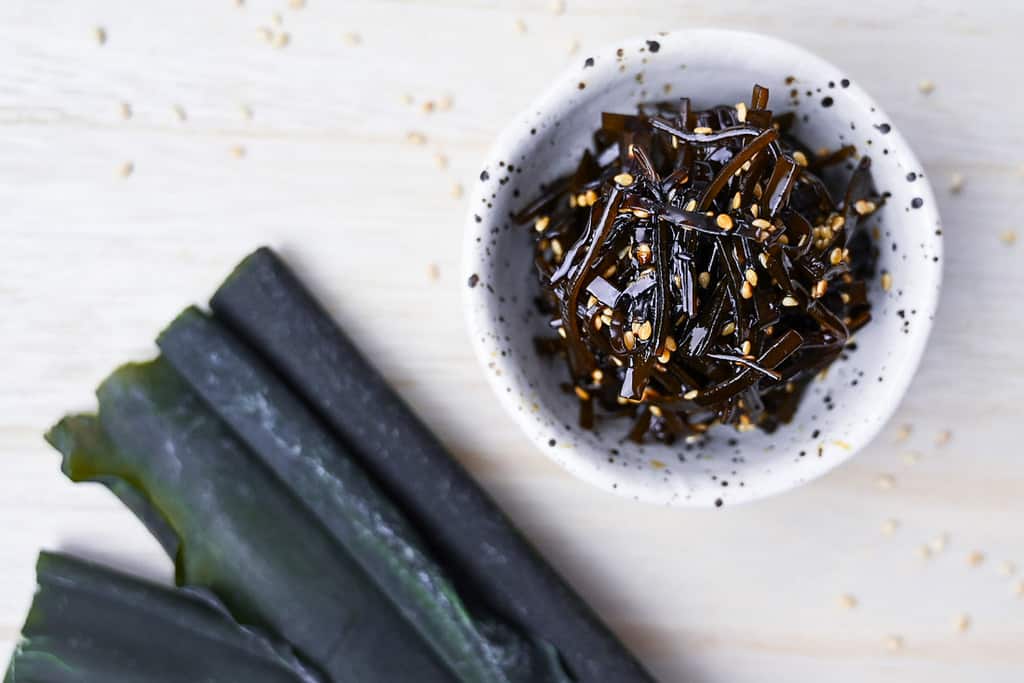
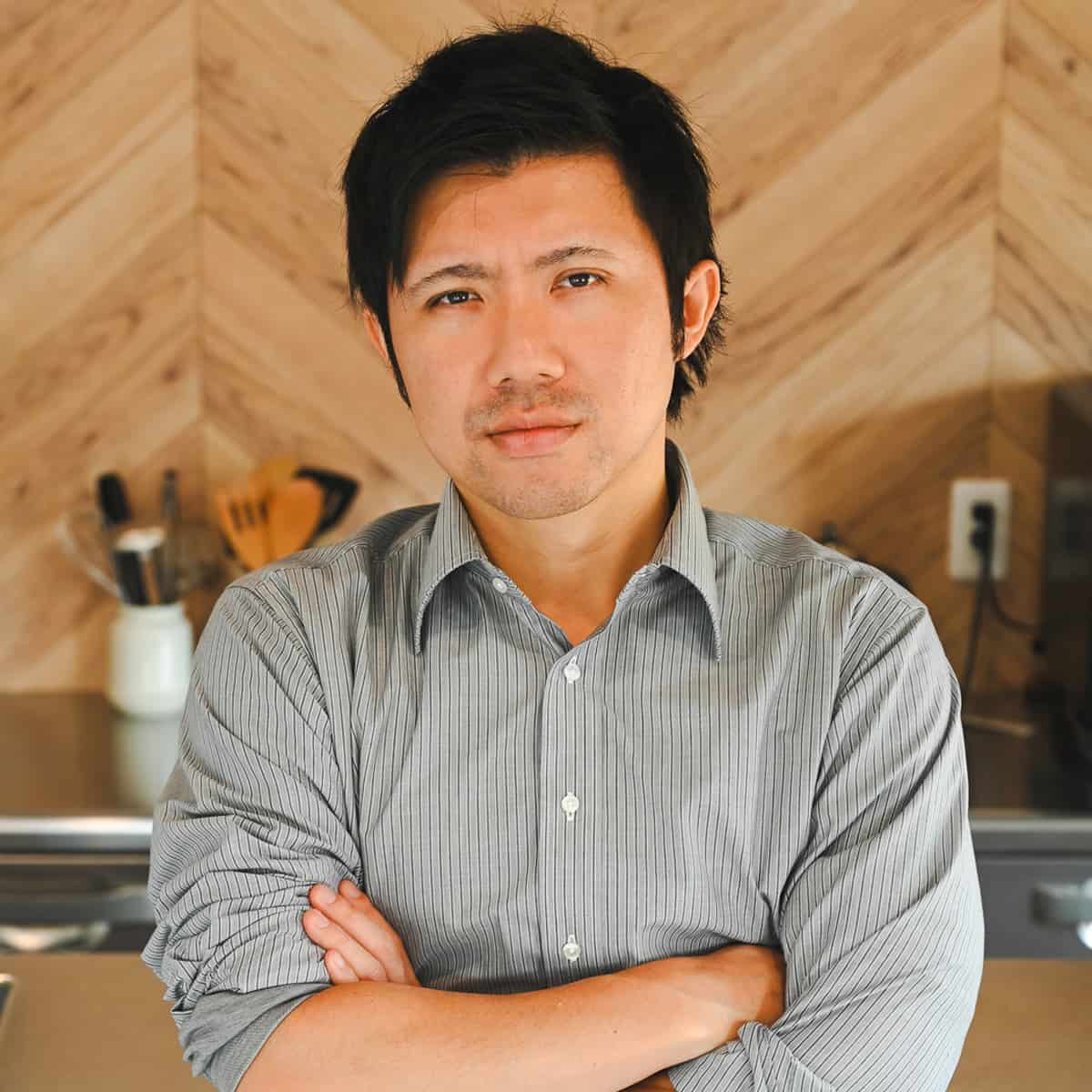
How I Developed This Recipe
In developing the perfect kelp rice ball recipe, my mission was clear: to capture the authentic essence of kombu onigiri at home. Ultimately, I have perfectly reproduced the kombu rice balls loved by onigiri specialty stores, convenience stores, and supermarkets.
The recipe is a nod to tradition and a celebration of sustainability. Instead of discarding the kelp after making dashi, why not give it a second life in a delicious rice ball?
It’s a delightful blend of flavors and a testament to the beauty of reusing ingredients.
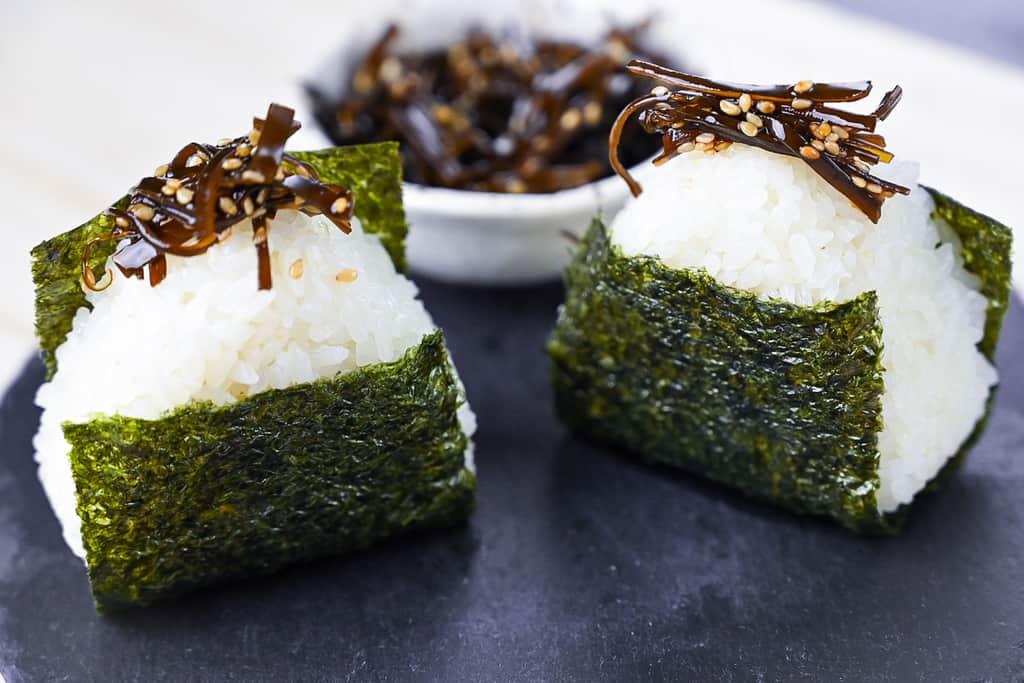
Ingredients & Substitution Ideas
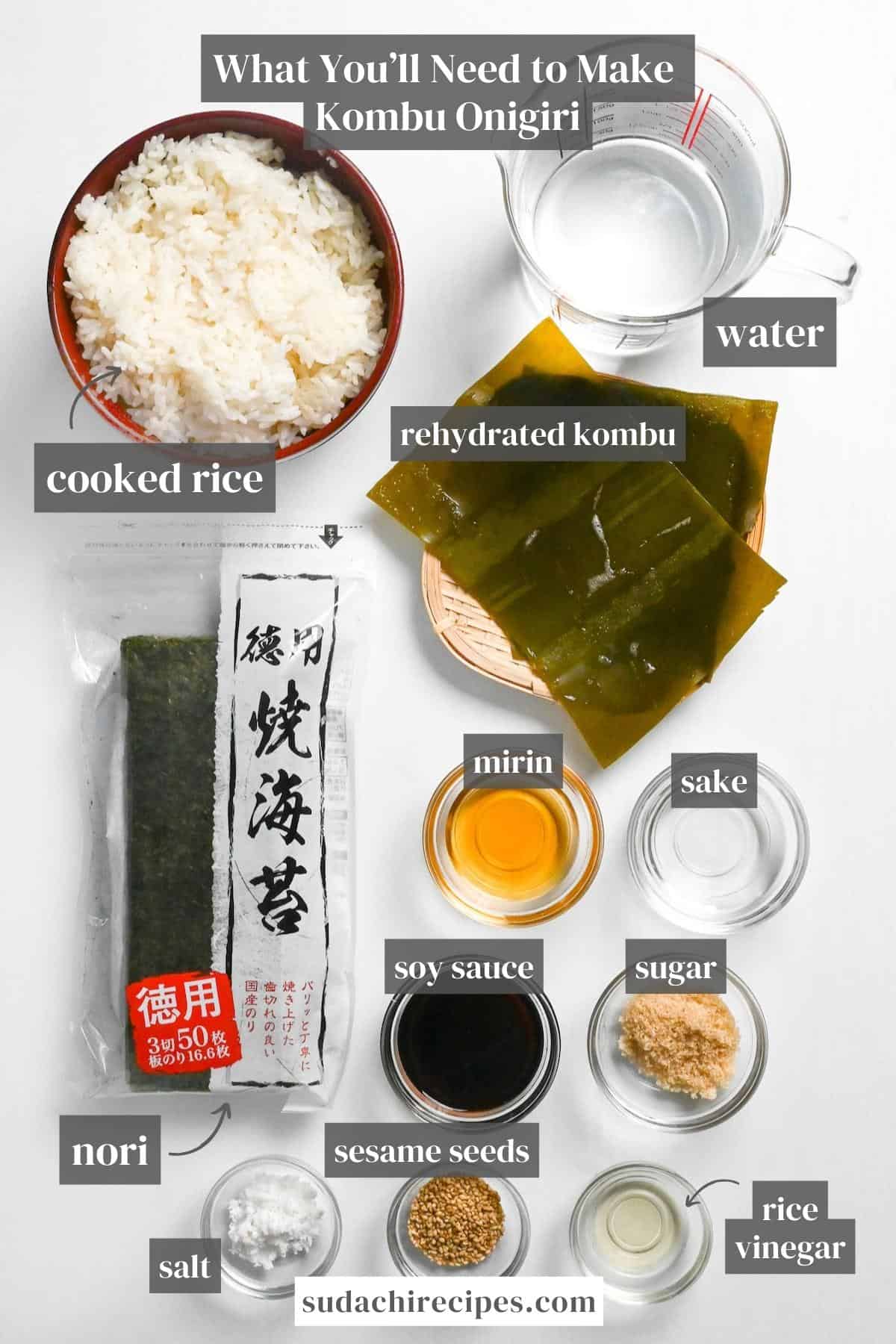
- Cooked Japanese Short-Grain Rice: For those authentic Japanese rice balls, you’ve got to use short-grain Japanese rice. If you’re in the U.S. and wondering which brand to pick and how to cook it right, my How to Cook Japanese Rice Recipe has all the answers.
- Sushi Nori Seaweeds: These are perfect for wrapping up your rice balls. While you could leave them out, to me, onigiri isn’t complete without that signature nori wrap.
- Rehydrated Kelp (Kombu): This recipe calls for kelp that’s been rehydrated after making broth, not the dried state. If you’re new to kelp or need a refresher on making kelp dashi, my Kombu 101 article is packed with tips and recommendations.
- Tsukudani Condiments: To simmer the kombu and create that rich tsukudani flavor, I use a mix of sake, rice vinegar, brown sugar, mirin, soy sauce, and a sprinkle of white sesame seeds.
Curious about the exact brands and products that bring my recipes to life? Discover the brands and ingredients behind my recipes at the Sudachi Amazon Storefront. Explore my handpicked pantry essentials and find your next kitchen favorites!
Jump to Full Recipe Measurements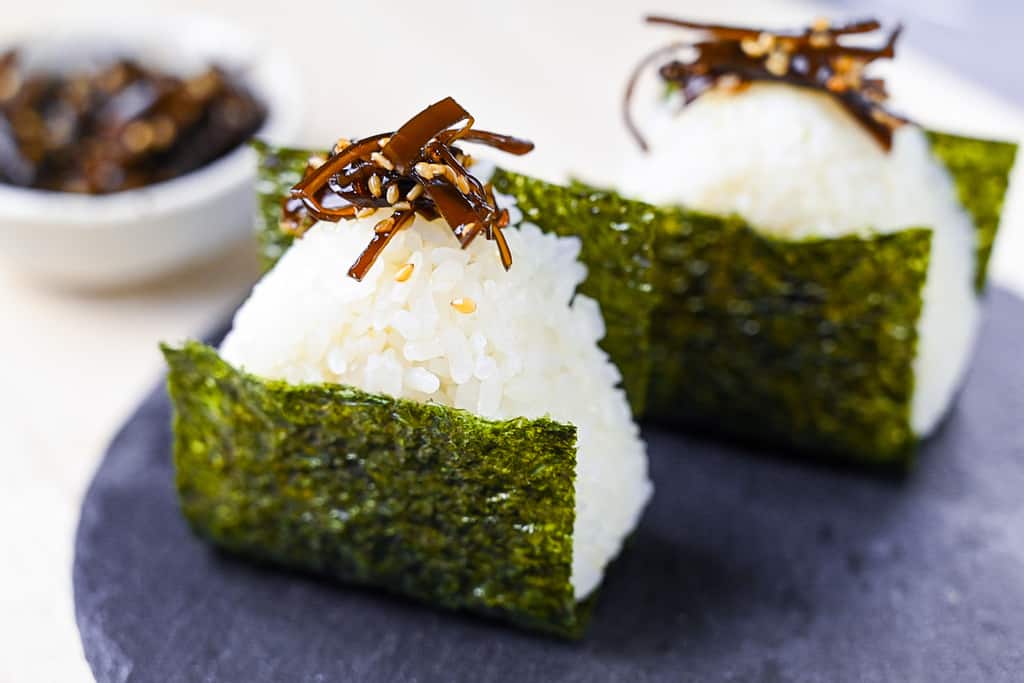
Visual Walkthrough & Tips
Here are my step-by-step instructions for how to make Kombu Onigiri at home. For ingredient quantities and simplified instructions, scroll down for the Printable Recipe Card below.
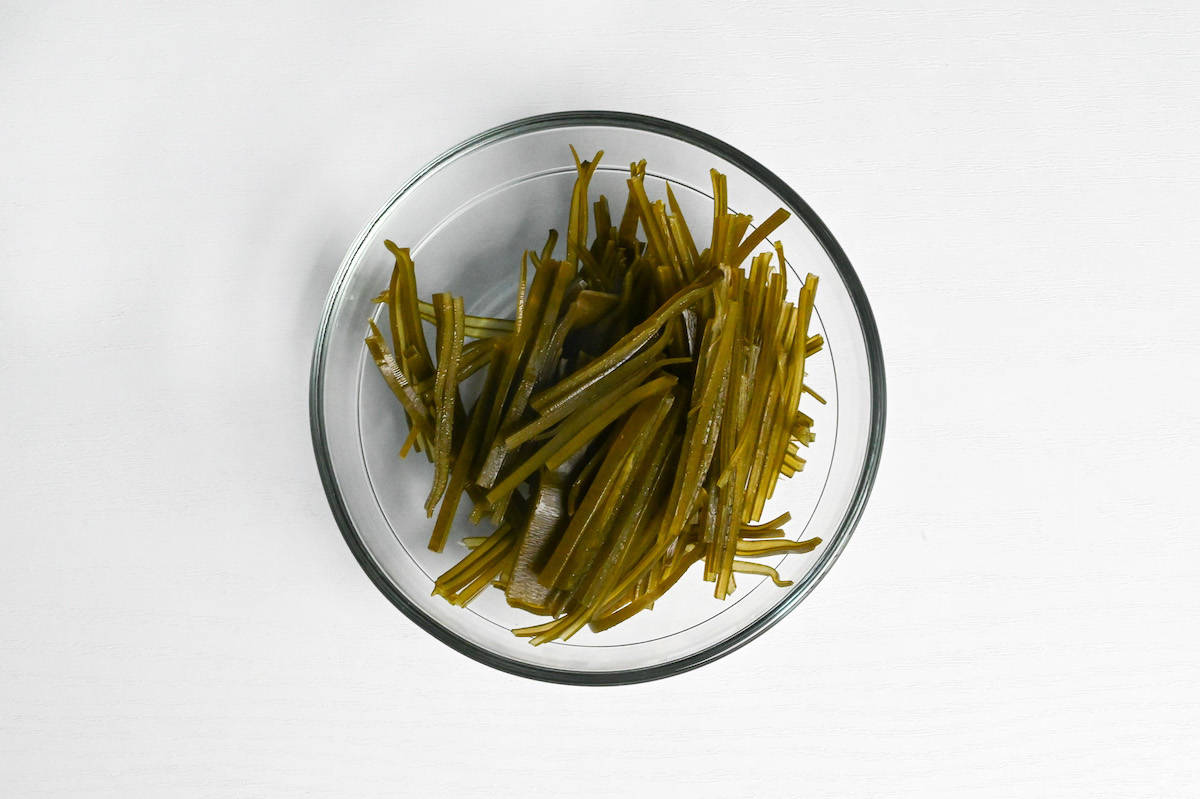
Slice rehydrated kombu into thin, elegant strips, about 3mm or roughly 1/10 inch thick.
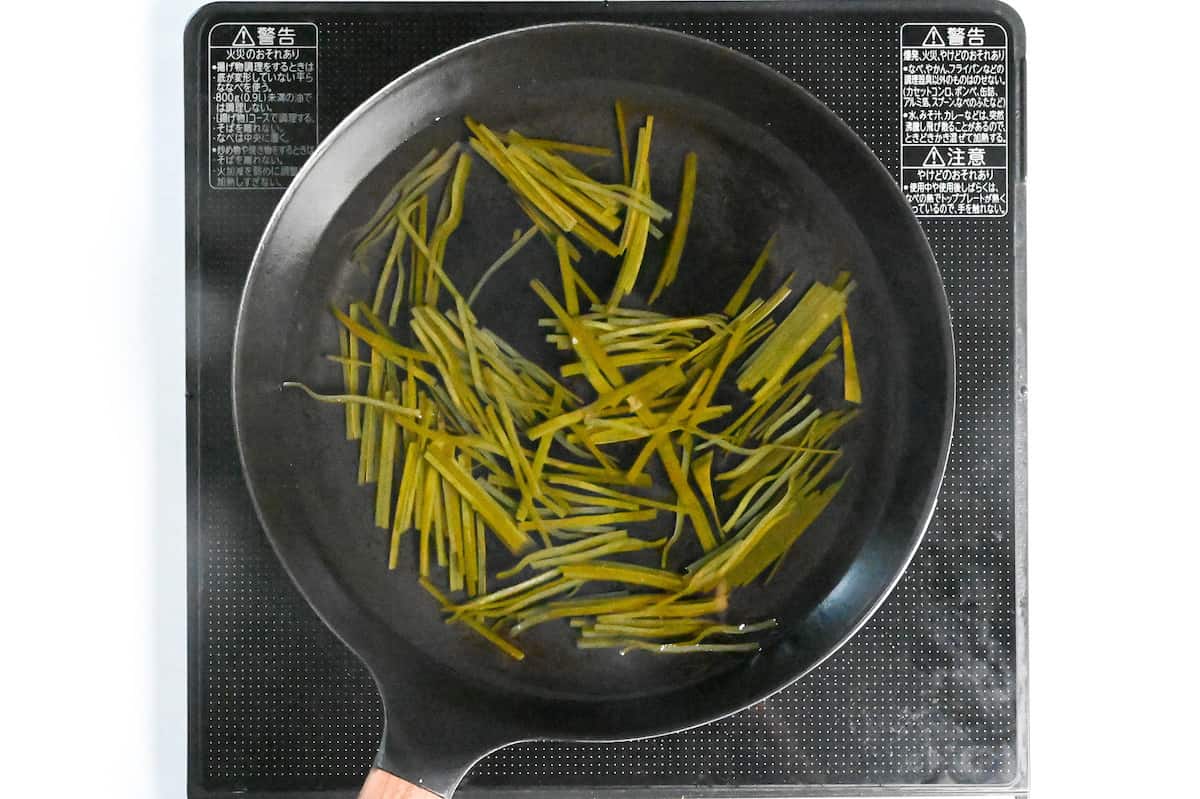
Combine the kombu strips, water, sake, and rice vinegar in a pan. This combination of ingredients helps soften the kombu.
Bring the mixture to a lively boil over medium heat. Once it’s bubbling away, reduce the heat and let it simmer. You’ll want the water to reduce to just under half its original volume, which should take around 20 minutes.
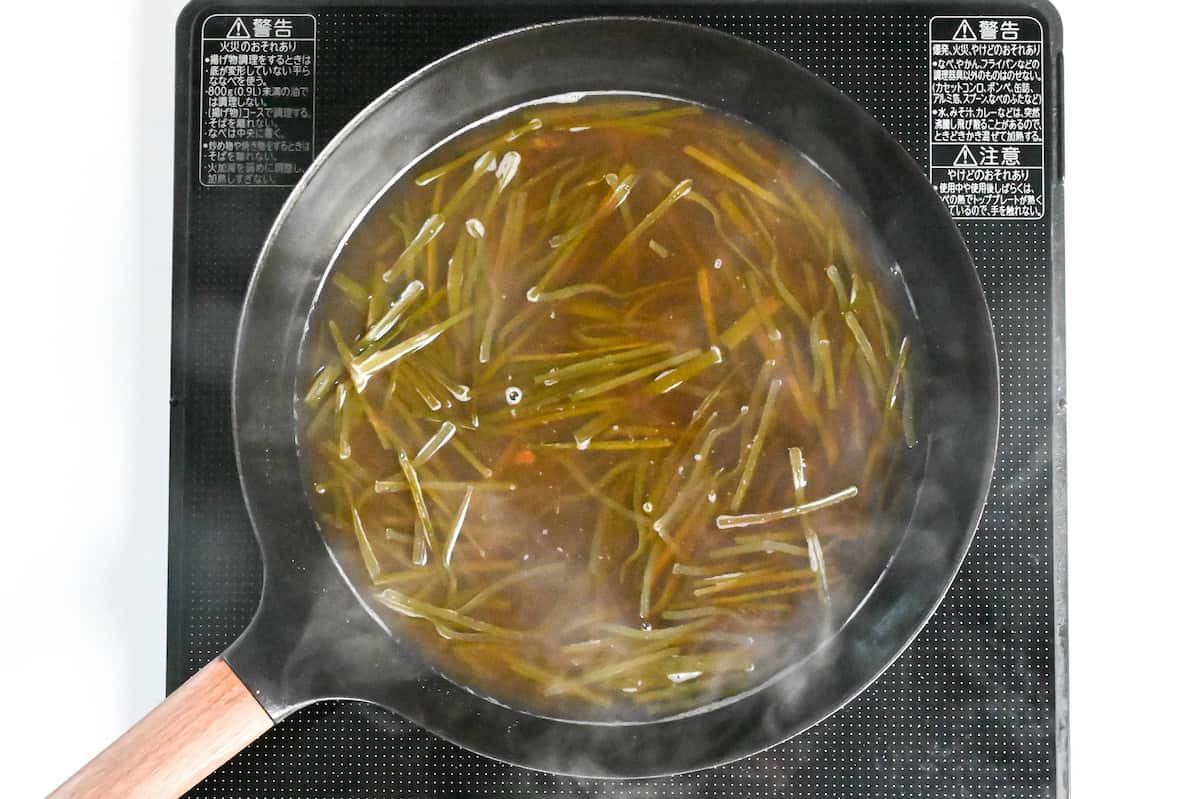
Stir in light brown sugar, mirin, and soy sauce.
Turn the heat to medium and boil until the liquid is all gone. Remember to stir frequently to prevent any burning.
If the kombu is still too hard even after reducing all the liquid and condiments, add more water, 100ml at a time, and simmer it until the liquid is gone.
Make sure to mix it often to ensure even cooking. Repeat the process until the texture of the kombu is softened to your liking.
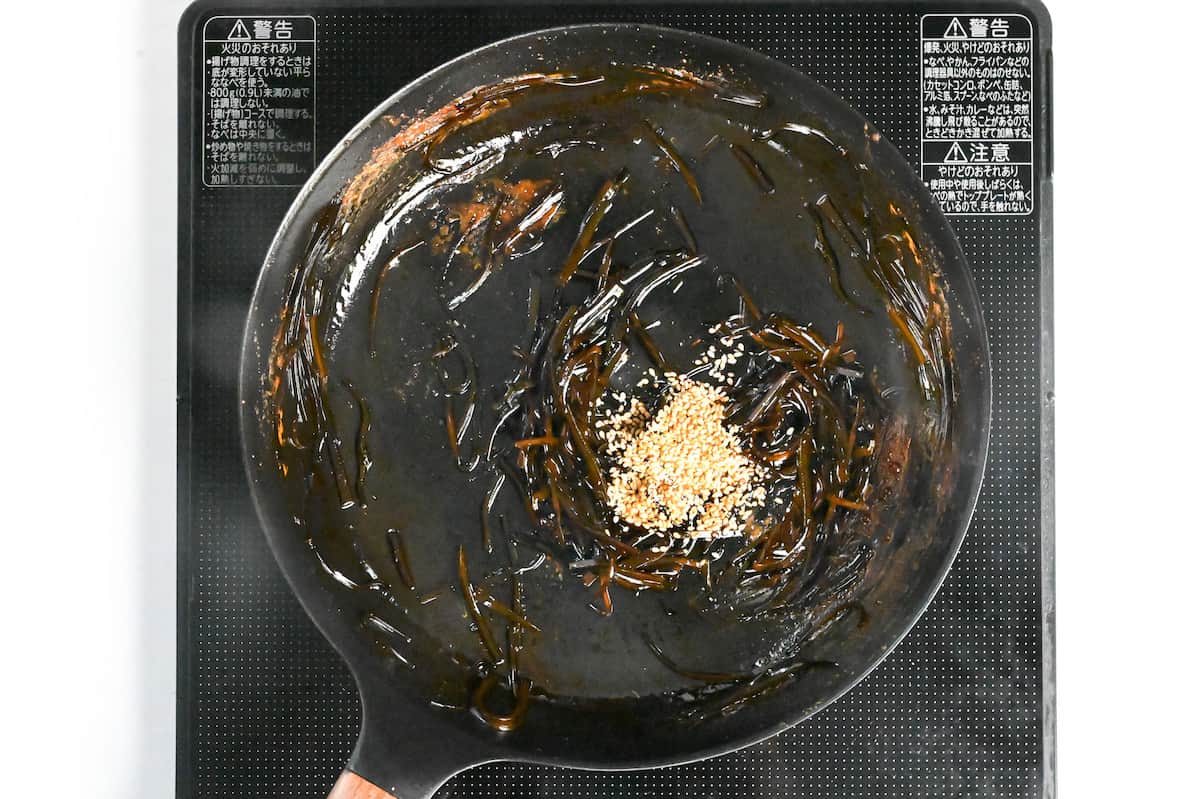
Once you have a thick, sticky, dark mixture, sprinkle in white sesame seeds and give it a good mix.
Sprinkle your hands (or onigiri mold) with a light dusting of salt and take a handful of rice. Gently flatten it out, place the kelp tsukudani in the center and fold the rice over until the filling is encased in the middle. If using a mold, simply add half of the rice, the tsukudani and then the other half. Gently press the top of the mold down to form your rice ball.
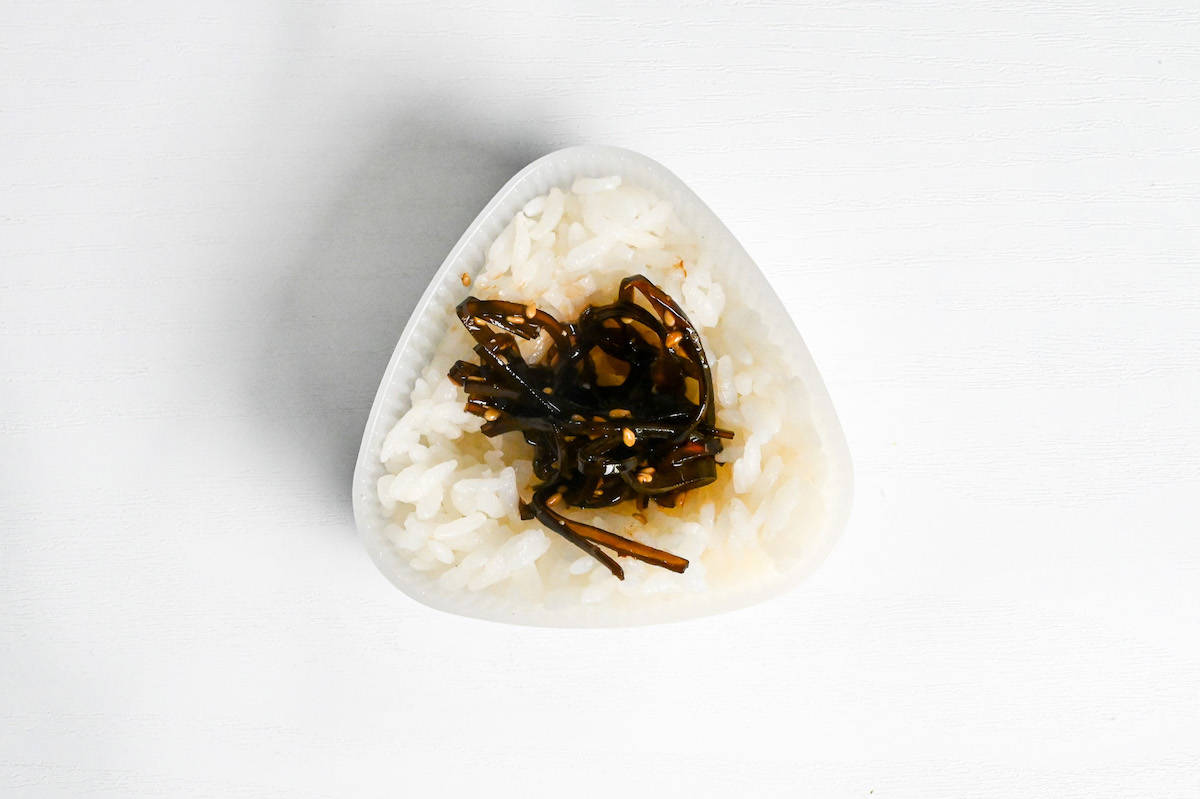
I used an onigiri mold like this one, but it’s also easy to shape by hand by shaping the rice into a rounded triangle shape.
Shaping an onigiri rice ball can be done using several methods. You can use cold and wet hands, wrap them in plastic, or use a mold. Regardless of the method you choose, the most important aspect is to press the rice down firmly to maintain its shape.
In conclusion, shaping an onigiri requires practice. In my post titled “3 ways to shape the perfect onigiri rice ball“, you can learn more about each method for shaping an onigiri.
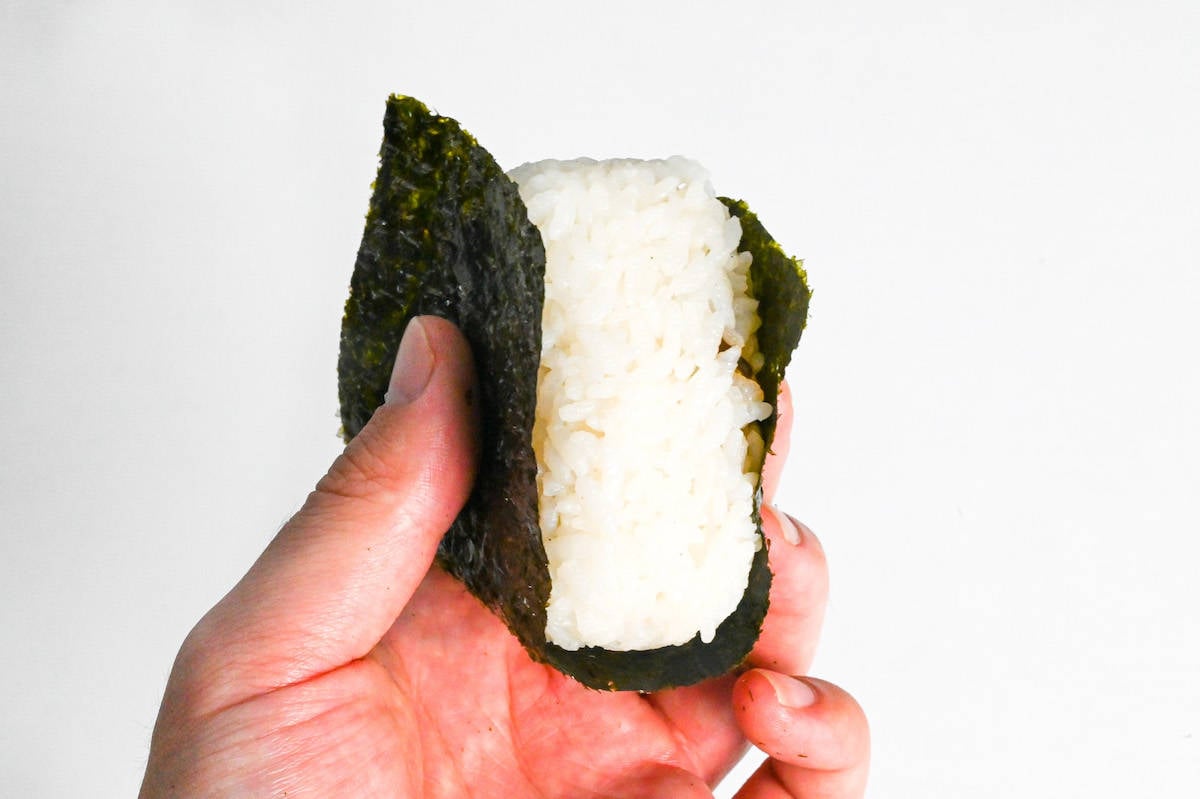
Enjoy!
Jump to Full Recipe MeasurementsHow to Store
For the best taste, rice balls should be consumed fresh and are not suitable for storing at room temperature or in the refrigerator. However, if you want to store them, it is recommended to freeze them.
To do this, wrap them in plastic (without nori) while still warm and place them in a freezer bag once they have cooled down. The shelf life of frozen onigiri is about one month, but the quality will diminish over time. It’s best to consume them within two weeks for optimal taste. Defrost in the microwave for best results.
If you have any leftover kombu tsukudani, you can keep it in a sealed container in the fridge for 1-2 weeks and use it as a rice topping or for future onigiri.
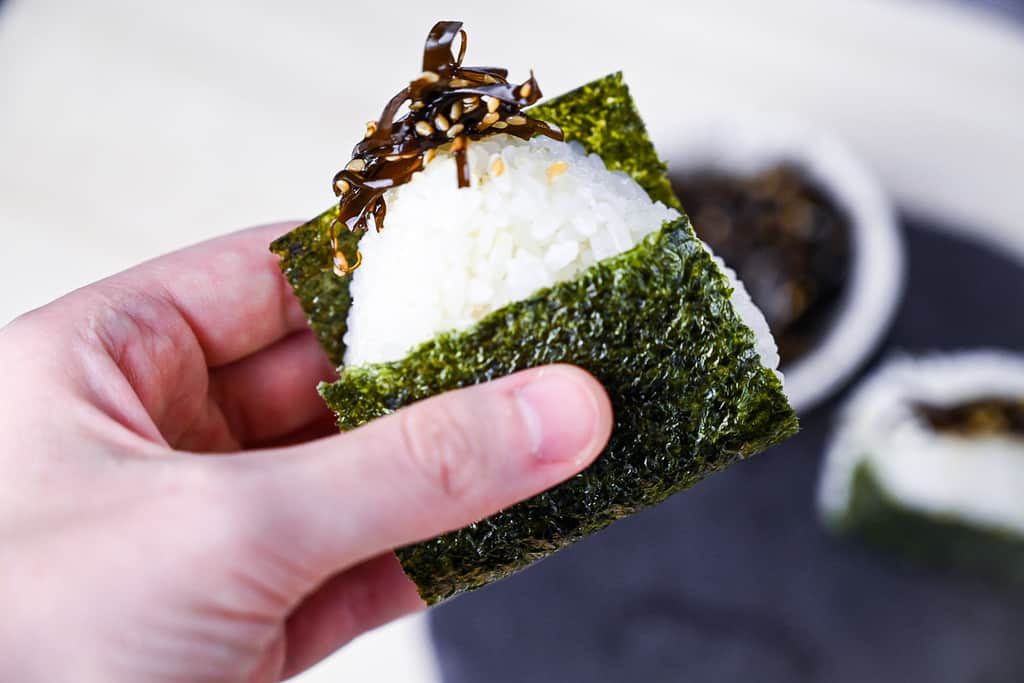
I hope you enjoy this Kombu Onigiri recipe! If you try it out, I’d really appreciate it if you could spare a moment to let me know what you thought by giving a review and star rating in the comments below. It’s also helpful to share any adjustments you made to the recipe with our other readers. Thank you!
More Japanese Rice Ball Recipes
- Soboro Chicken Onigiri
- Salmon Onigiri
- Yaki Onigiri
- Okaka Onigiri (with Bonito Flakes)
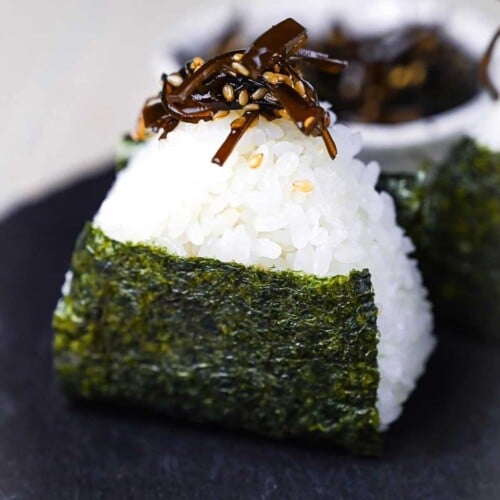
Kombu Onigiri (Kelp “Tsukudani” Rice Ball)
Equipment
Ingredients
For making the onigiri
- 600 g cooked Japanese short-grain rice
- 2 tsp salt
- 6 pieces sushi nori seaweed cut to rice ball size, 1 sheet of sushi nori will be enough for approx 4 onigiri
Instructions
- Before starting, make sure your kombu is already rehydrated. It needs to soak for at least 1 hour before making tsukudani, and the leftover liquid can be used as kombu dashi.

- You can cook the rice while the tsukudani is simmering. Use Japanese short grain white rice or sushi rice. The rice needs to be sticky so that it holds it shape. Use a rice cooker or check out my how to cook Japanese rice on the stove recipe.

Making Kombu Tsukudani
- Cut 50 g rehydrated kombu into thin strips. (About 3mm or 1/10 inch thick)

- Add the sliced kombu to a pan with 500 ml water, 2 tbsp sake and 1 tsp rice vinegar. Bring to a rolling boil over a medium heat, then lower the heat and simmer until the water has reduced to a little less than half. This should take approximately 20 minutes.

- Add 1 tbsp light brown sugar, 1 tbsp mirin and 2 tbsp soy sauce. Mix well and increase the heat back to medium.

- Continue to boil until the liquid is completely reduced, mix often to prevent burning. Once thick, sticky and dark, sprinkle in ½ tbsp white sesame seeds and mix well.

Shaping Onigiri
- Sprinkle salt over your rice ball mold (or slightly dampened hands) and shape your rice. Place 1-2 tsp of the kombu tsukudani in the center and encase.

- For more details on how to shape onigiri by hand, check out my 3 ways to shape perfect onigiri post.

- Wrap the onigiri with a sheet of nori and enjoy! You can also place the kombu tsukudani on top of the rice ball for decoration.

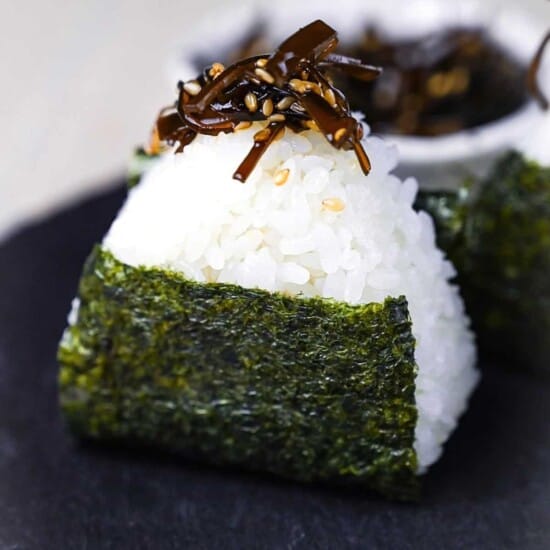



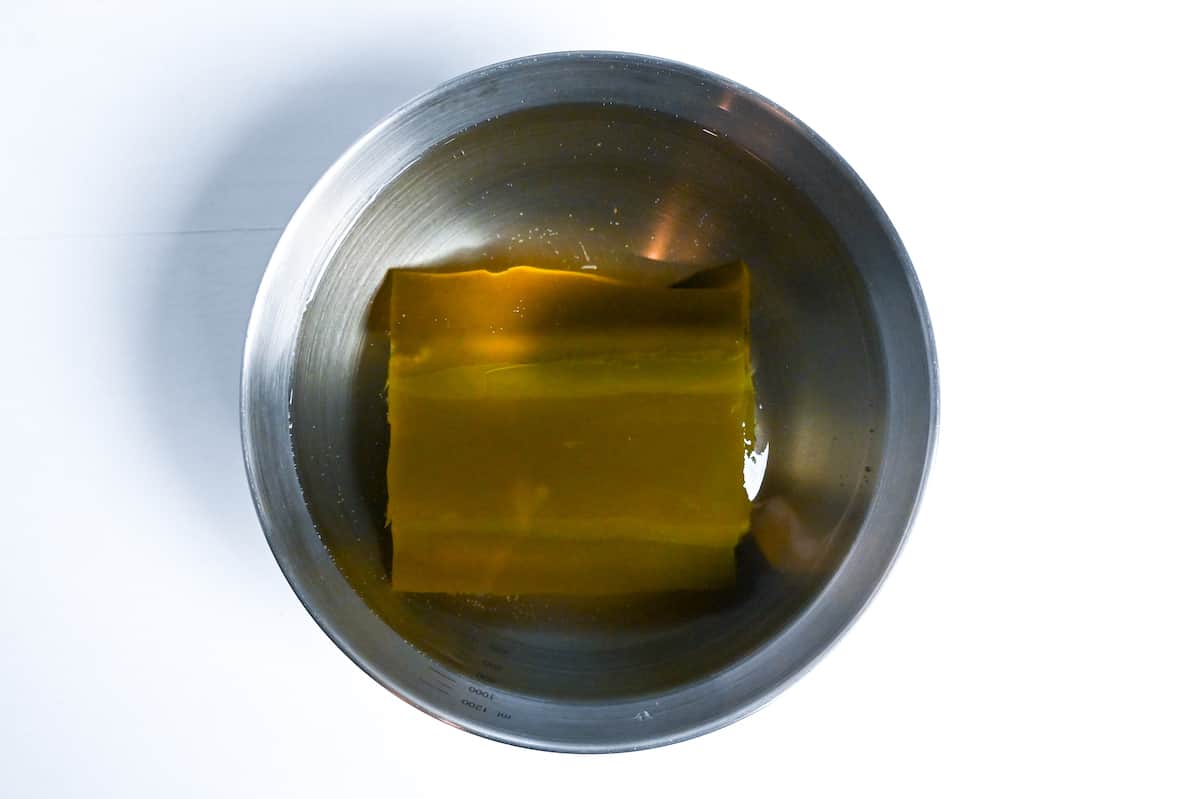
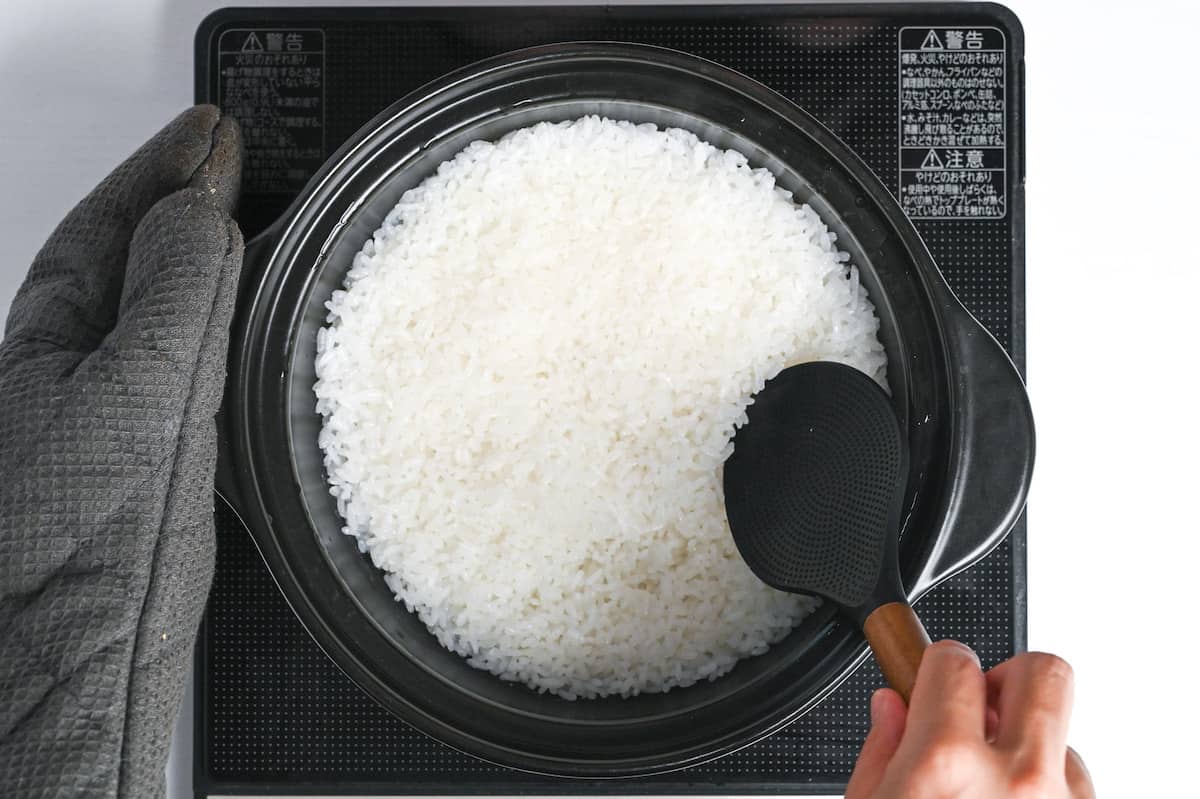

Thank you so much for this recipe! When I lived in NYC, onigiri from a local Japanese market was a frequent on-the-go snack for me, and kombu was my favorite onigiri filling. Now that I live in rural WV, it is hard to find prepared tsukudani, even on trips to Asian supermarkets in bigger cities. This recipe nails the flavor perfectly, and it can be made with ingredients that are not too hard to find (or that can be ordered online). I’ve made it several times now, most recently in a bigger quantity – it keeps quite well in the fridge. You are a lifesaver – thank you!
Hi Kiki,
I’m so happy to hear you’re enjoying the recipe and can now enjoy kombu onigiri anytime! I’ve never seen kombu onigiri outside of Japan, I’m sure you can only find it in very specific Japanese supermarkets. Thank you for your kind rating 🙂